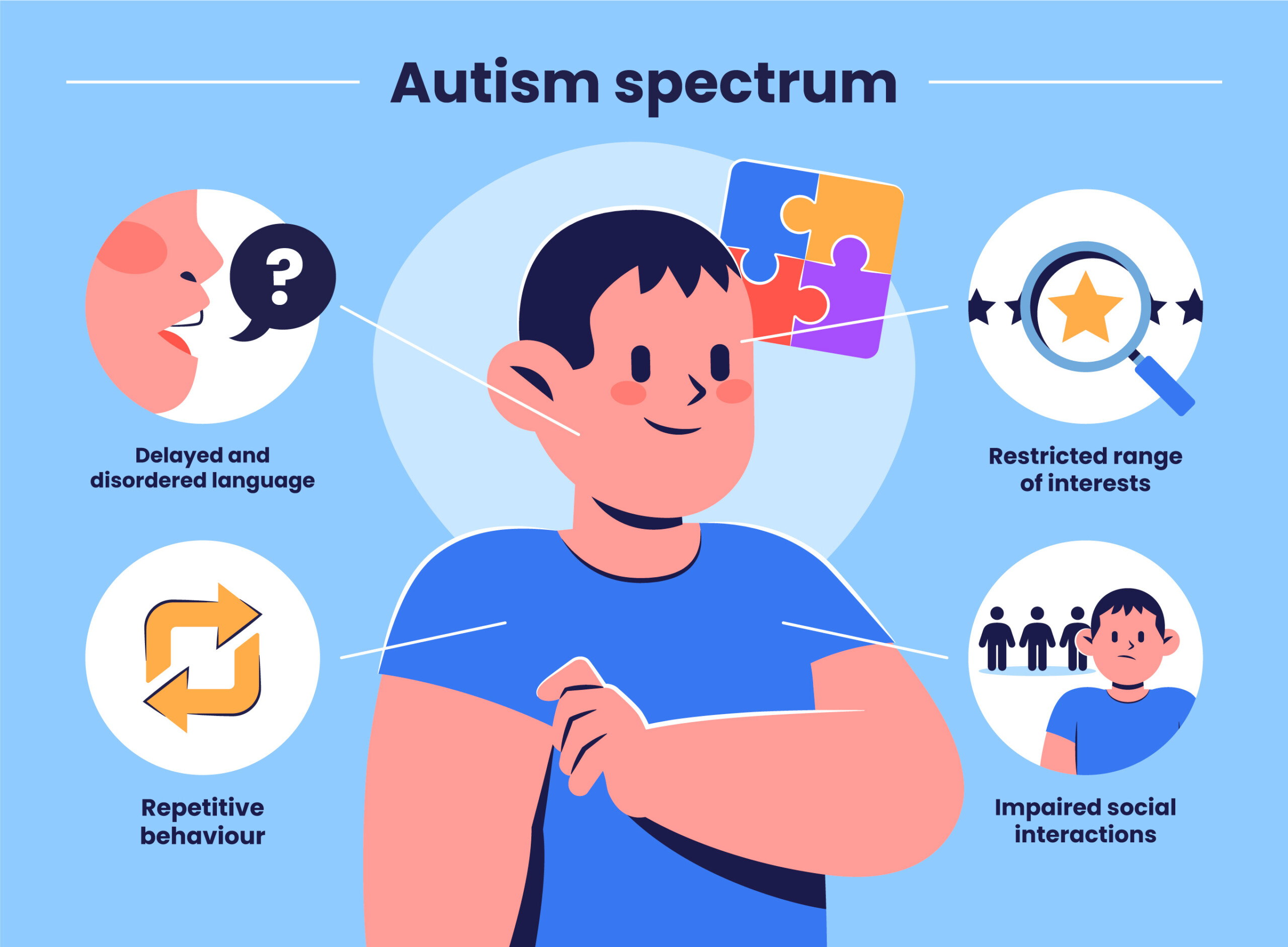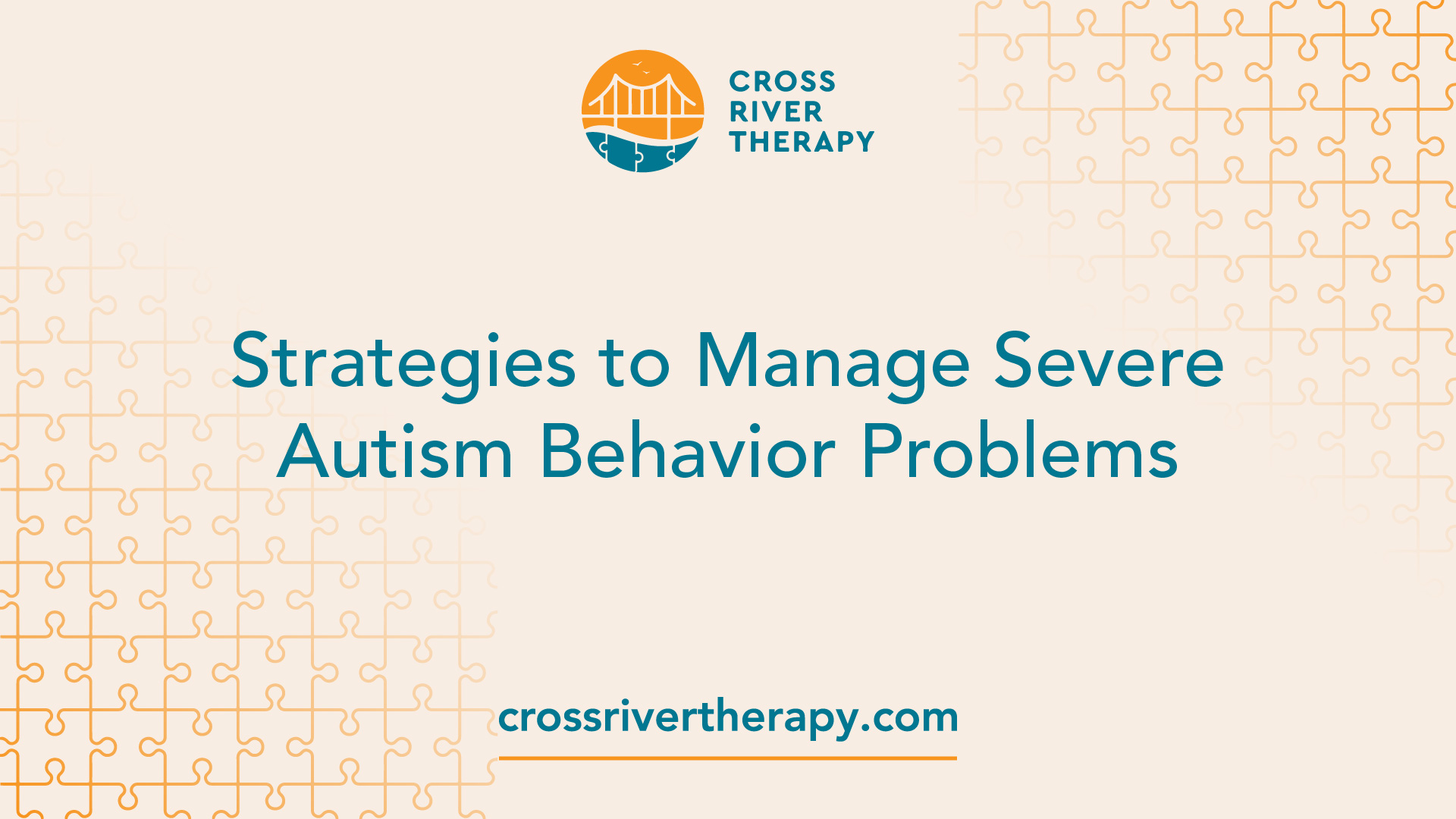Coping with hypersensory challenges with support from Autism Spectrum Therapies
Coping with hypersensory challenges with support from Autism Spectrum Therapies
Blog Article
Understanding the Influence of Behavioral Autism on Daily Life and Social Interactions
You could not recognize just how deeply behavioral autism affects everyday life and social communications. People on the spectrum usually navigate a world filled with interaction obstacles and sensory overload. These obstacles can lead to frustration and seclusion, impacting their relationships and general well-being.
Specifying Behavior Autism and Its Qualities
Behavioral autism, usually referred to as autism range condition (ASD), incorporates a variety of conditions identified by challenges in social communication, interaction, and repetitive habits. You may see that individuals with ASD usually have a hard time to analyze social hints, which can lead to misconceptions in conversations. They may locate it hard to establish eye call or participate in little talk, making social situations feel frustrating.
Interaction difficulties can show up in various methods, from postponed speech development to a preference for utilizing less words. Recurring behaviors, such as hand-flapping or rocking, can serve as coping systems to take care of stress or sensory overload. These features can profoundly impact life, making it crucial for you to understand and support those with ASD. By recognizing these qualities, you can promote an atmosphere that advertises approval and motivates efficient interaction, aiding people with autism grow in their everyday interactions.
The Range of Autism: Comprehending Variability in Actions
Autism range disorder (ASD) isn't a one-size-fits-all diagnosis; it varies extensively among individuals. You may experience people who are highly spoken and involve conveniently in conversations, while others could like solitary activities or communicate non-verbally.
Furthermore, the means individuals with ASD reply to sensory input can vary substantially; some may be bewildered by bright lights or loud sounds, whereas others prosper in boosting environments. The spectrum likewise consists of differences in social interactions; some individuals may have a hard time to analyze social hints, while others browse social setups with relative simplicity. Recognizing this irregularity is essential, as it assists you appreciate each individual's special experience and dressmaker support to their details needs, promoting a more comprehensive setting for everybody.
Interaction Challenges Dealt With by People With Autism
When you engage with people on the autism range, you may see their distinct interaction obstacles. They commonly encounter difficulties with both nonverbal and verbal hints, which can influence their social interactions. Comprehending these obstacles is necessary for cultivating better connections and support.

Verbal Interaction Problems
Several individuals on the autism range experience verbal interaction problems that can considerably affect their everyday interactions. You could discover it testing to express your ideas, sensations, or requires clearly. This can bring about aggravation for both you and those around you, as misunderstandings occur. You may fight with initiating conversations, maintaining a topic, or recognizing nuances in speech. Typically, you might choose making use of simple language or repetitive expressions, which can restrict your capability to take part in deeper discussions. Your volume, pace, or tone might not straighten with social assumptions, creating others to misunderstand your intentions. Recognizing these difficulties can assist you and your support network create approaches to boost interaction and promote far better links with others in your every day life.
Nonverbal Communication Obstacles
Verbal interaction isn't the only challenge people on the autism spectrum face; nonverbal communication obstacles can be just as substantial. You might locate it challenging to interpret body movement, faces, and eye contact, which are important for reliable communication. These obstacles can lead to misconceptions or misinterpretations of social hints, making interactions feel overwhelming or confusing. You might have a hard time to reveal your very own emotions with nonverbal methods, leaving others unsure of your sensations or purposes. This detach can develop feelings of isolation and aggravation. Identifying these obstacles is essential for promoting understanding and compassion in your interactions. By resolving nonverbal communication, you can locate approaches to improve your social experiences and enhance your overall lifestyle.
Social Interaction Impacts
Social interactions can usually feel frustrating as a result of the unique communication challenges encountered by people with autism. You may battle with interpreting social hints, making it hard to understand mockery or body language. This can bring about misunderstandings or uncomfortable minutes in conversations. Additionally, initiating and preserving discussions might really feel tough, creating anxiety in social situations. You might prefer organized settings, making spontaneous interactions unpleasant. It's additionally usual to experience problem in participating in tiny talk, which can hinder creating new relationships. Identifying these obstacles can aid you find approaches to enhance communication, such as exercising social abilities in safe setups or using visual aids - Autism Behavioral Therapy. Understanding your needs enables you to browse social communications with greater self-confidence and convenience.
Social Interaction and Relationship Structure in Autism
While building relationships can be testing for individuals with autism, comprehending their distinct viewpoints and communication designs can foster significant connections. You could notice that several people on the range like direct communication and may fight with social cues or little talk. By being uncomplicated in your communications, you can assist develop an environment where they really feel comfortable.
Put in the time to observe and pay attention just how they express themselves. This understanding can lead you in guiding conversations extra effectively. Taking part in shared interests can likewise act as a bridge to much deeper connections. Whether it's a hobby, a favored show, or a mutual interest, these common strings can open up doors to friendship.
Daily Life Routine: Browsing Obstacles and Methods
Maneuvering day-to-day life regimens can be particularly testing for people with autism, especially when unforeseen adjustments occur. To browse these challenges, take into consideration executing visual timetables or lists.
Establishing a regimen that i was reading this includes sensory breaks can also be useful. You can prepare time-outs throughout your day to reenergize. It's necessary to communicate with those around you, allowing them understand your requirements and preferences. This aids create an understanding setting.
Lastly, method mindfulness methods to take care of tension and stress and anxiety. Straightforward breathing exercises or grounding methods can make a substantial distinction. By including these methods, you can improve your everyday routine and decrease interruptions, making life feel a lot more manageable.
Staminas and Capabilities of Individuals on the Autism Range
Understanding everyday life routines is simply one element of the autism experience. Several individuals on the autism range possess remarkable toughness and abilities that establish them apart.
Furthermore, your memory skills frequently beam, specifically in areas of passion. Aba Therapist. This knack for preserving information can make you a valuable resource in areas like art, innovation, or science. You might likewise show strong visual reasoning, enabling you to visualize intricate ideas and address issues creatively
In addition, your special perspective on the world can foster compassion and understanding in others, enhancing social communications. Welcoming these strengths not only improves your confidence however additionally assists others appreciate the diverse abilities you offer the table.
Producing Inclusive Settings for People With Autism
Producing inclusive environments for people with autism starts with making sensory-friendly spaces that provide to their unique requirements. You can additionally cultivate possibilities for social communication, assisting to construct friendships and connections. By making these changes, you'll add to a more inviting atmosphere for every person.
Creating Sensory-Friendly Spaces
While developing sensory-friendly areas, it's essential to mirror on the one-of-a-kind requirements of people with autism. Begin by selecting relaxing shades and soft illumination to develop a calming setting. Integrate quiet areas where people can reenergize and pull back when overwhelmed. You'll want to lessen loud noises and interruptions, using soundproof materials or white noise equipments to help preserve peace. Take into this contact form consideration responsive elements like soft textiles or fidget-friendly things that can offer convenience. Ascertain that spaces are adaptable, enabling for simple reformation to suit various activities. Ultimately, consist of aesthetic routines or clear signage to help individuals navigate the room with confidence. By thoughtfully incorporating these components, you can create an inviting atmosphere that sustains sensory demands and promotes overall well-being.
Advertising Social Communication Opportunities
Designing sensory-friendly spaces not only addresses specific convenience yet also establishes the phase for purposeful social communications among individuals with autism. Urge peer mentoring, pairing people with autism with helpful peers who can assist them via social situations. By carrying out these strategies, you can enhance social opportunities, aiding people with autism develop friendships and enhance their social abilities in a risk-free, welcoming atmosphere.

Frequently Asked Questions
Exactly How Can Friends Support Somebody With Behavioral Autism?
You can sustain a pal with behavior autism by holding your horses, listening actively, and respecting their limits. Involve in activities they appreciate, interact openly, and develop a comfortable atmosphere where they feel valued and comprehended.
What Resources Are Offered for Parents of Children With Autism?
You can explore various sources for moms and dads of kids with autism, including support system, instructional internet sites, and regional area solutions. Connecting with various other moms and dads can likewise provide useful insights and shared experiences to assist navigate obstacles.
Can Behavioral Autism Modification Over Time?

Yes, behavior autism can change over time. You may discover changes in communication, social abilities, and habits as your kid expands. Early treatment and assistance typically play crucial functions in these developmental changes.
How Do Sensory Level Of Sensitivities Impact Every Day Life?
Sensory level of sensitivities can make daily experiences overwhelming. You could have a hard time with loud sounds or intense lights, causing tension or avoidance. Locating environments that accommodate your needs can significantly improve your convenience and overall every day life.
What Prevail Misconceptions Concerning Behavioral Autism?
You may assume behavioral autism just impacts interaction skills, however it's even more complex. Lots of think people like it do not have compassion or intelligence, which isn't real. Understanding these misunderstandings assists foster approval and assistance for those on the range.
Behavior autism, usually referred to as autism spectrum disorder (ASD), includes a variety of problems identified by obstacles in social communication, interaction, and repetitive habits.Social interactions can often feel overwhelming due to the special communication obstacles dealt with by individuals with autism.Creating sensory-friendly spaces not just addresses private convenience however likewise establishes the phase for purposeful social interactions amongst people with autism. Encourage peer mentoring, coupling individuals with autism with encouraging peers that can assist them via social scenarios. By implementing these approaches, you can enhance social possibilities, helping individuals with autism build relationships and enhance their social abilities in a secure, welcoming setting.
Report this page